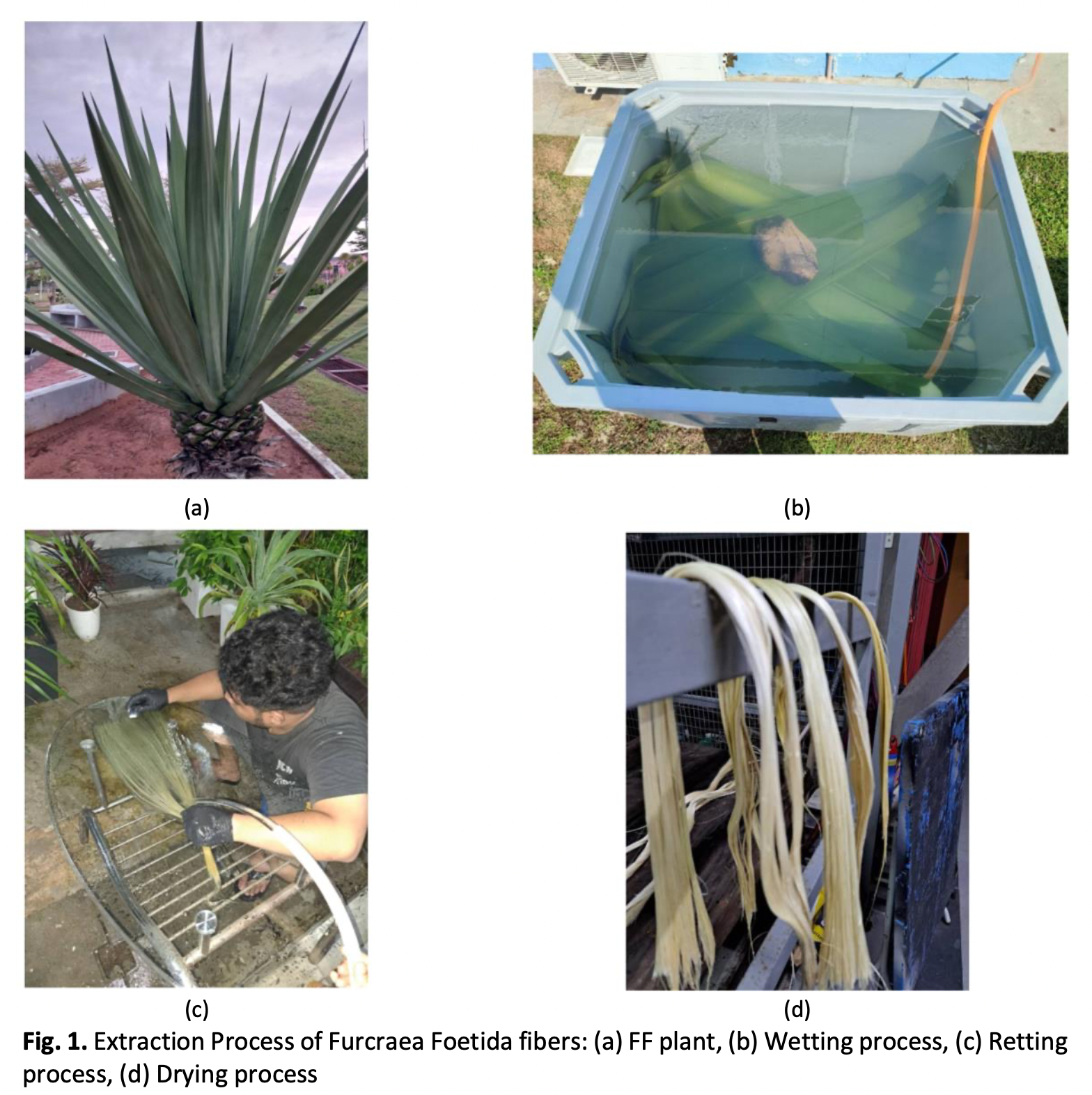Tribological Behaviour of Furcraea Foetida Fiber-Reinforced Epoxy Composites under Varying Applied Loads
DOI:
https://doi.org/10.37934/araset.33.3.98111Keywords:
Tribological behaviour, applied load, Furcraea Foetida fibre-reinforced epoxy composites, frictional response, coefficient of friction, specific wear rate, Scanning Electron MicroscopyAbstract
This study investigates the tribological behaviour of Furcraea Foetida fibre-reinforced epoxy composites under varying applied loads. The aim is to understand the influence of applied load on the frictional behaviour and wear characteristics of the composites. The study employs a pin-on-disk test to examine the frictional force, coefficient of friction (COF), and specific wear rate (SWR) of identical samples subjected to four different loads (80 N, 100 N, 120 N, 140 N). Scanning electron microscopy (SEM) is used to analyse the surface morphology under different loads. The frictional force versus sliding distance graph demonstrates an increasing trend from 80 N to 120 N, followed by minimal change at 140 N. Similarly, the COF versus applied load graph shows a progressive increase from 80 N to 120 N, with the least increase observed at 140 N. The SWR versus applied load graph indicates an increasing trend from 80 N to 120 N, with marginal variation at 140 N. SEM analysis reveals that only the sample subjected to 140 N shows evidence of plastic deformation. In conclusion, the results indicate that the applied load significantly influences the frictional behaviour and wear characteristics of the Furcraea Foetida fibre-reinforced epoxy composites. At higher loads, the increase in frictional force, COF, and SWR becomes less pronounced, suggesting potential saturation in the composites' response. The presence of plastic deformation at 140 N further highlights the unique behaviour observed at this load. These findings contribute to a better understanding of the tribological performance of the composites and have implications for their practical applications.
Downloads





























